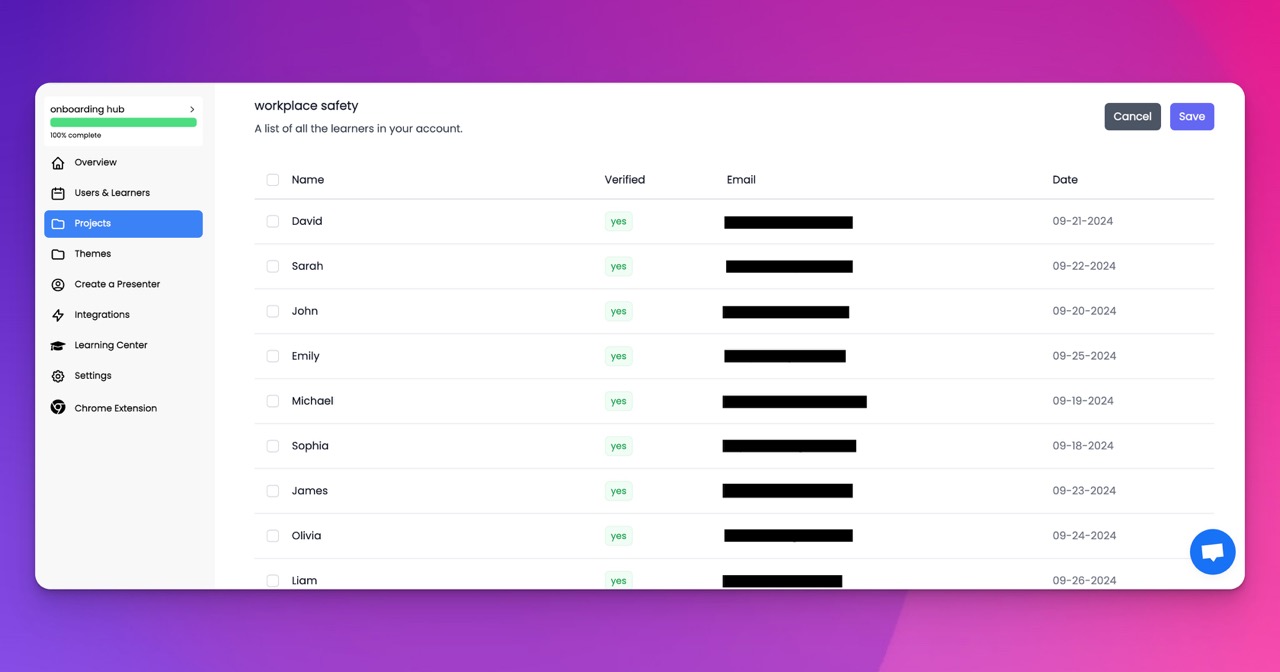🎉 Trainday now integrates with Zendesk and Hubspot 🎉 Trainday now integrates with Zendesk and Hubspot 🎉 Trainday now integrates with Zendesk and Hubspot
🎉 Trainday now integrates with Zendesk and Hubspot
🎉 Trainday now integrates with Zendesk and Hubspot
Contact
Insurance
Interactive Employee Training Programs in Insurance: Engaging Methods
Interactive Employee Training Programs in Insurance: Engaging Methods with Data and Artificial Intelligence
In the fast-paced world of insurance, it is crucial for employees to stay up-to-date with industry trends, regulations, and product knowledge. Traditional training methods often fall short in terms of efficiency and engagement, leading to the need for more innovative solutions. This blog post will explore how data and artificial intelligence (AI) can revolutionize employee training programs in the insurance industry, enabling companies to create relevant courses in record time.
The Power of Data in Employee Training:
Data is the driving force behind modern employee training programs. By leveraging data analytics, insurance companies can identify knowledge gaps, performance patterns, and training needs of their employees. This valuable information can be used to develop targeted and personalized training courses that address specific skill deficiencies and enhance overall productivity.
AI-Driven Content Creation:
Artificial intelligence has transformed the way companies create training content. AI algorithms can analyze vast amounts of data, including policy documents, claims data, and industry reports, to extract relevant information. By using natural language processing and machine learning, AI can automatically generate training materials, quizzes, and simulations that are tailored to the specific needs of individual employees or teams.
Adaptive Learning and Personalized Training:
One-size-fits-all training programs often fail to engage employees effectively. With AI-powered adaptive learning, insurance companies can provide personalized training experiences that adapt to each employee's knowledge level, learning style, and pace. By monitoring individual progress and performance, AI algorithms can dynamically adjust the training content, ensuring employees receive the most relevant information in real-time, ultimately improving knowledge retention and application.
Virtual Reality (VR) and Gamification:
To enhance engagement, companies are increasingly turning to virtual reality (VR) and gamification techniques. VR simulations allow employees to experience realistic scenarios, such as assessing property damage or handling customer interactions, in a safe and controlled environment. Gamification elements, such as leaderboards, badges, and rewards, can motivate employees to actively participate in training activities, fostering healthy competition and a sense of accomplishment.
Real-Time Feedback and Assessment:
Traditional training programs often lack immediate feedback and assessment mechanisms. AI-powered platforms can provide instant feedback, assessing employees' understanding of concepts, identifying areas for improvement, and offering targeted recommendations for further learning. This real-time feedback loop ensures that employees receive timely guidance, allowing them to address knowledge gaps promptly.
Conclusion:
In a rapidly evolving industry like insurance, employee training programs must keep pace with the changing landscape. By harnessing the power of data and artificial intelligence, insurance companies can create interactive and engaging training programs that are tailored to individual needs in record time. These innovative approaches not only improve knowledge retention but also enhance overall employee performance, ultimately leading to greater efficiency and customer satisfaction. Embracing these technologies is a win-win for both insurance companies and their employees.
Accelerate Compliance.
Deliver OSHA-Ready Courses Instantly.
Empower your team with data-driven training solutions tailored to your industry's safety standards. Stay compliant, reduce risks, and boost productivity with AI-powered course creation.
